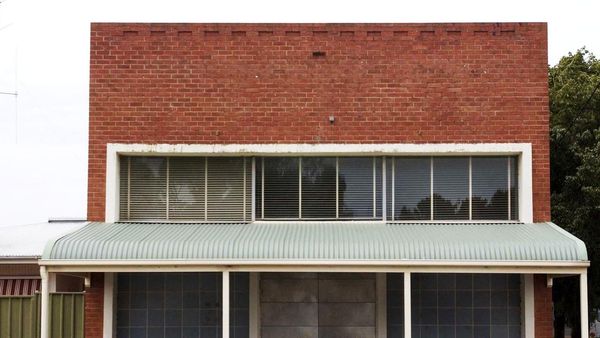
Let’s be honest — power outlets aren’t the most glamorous part of kitchen design, but these tiny elements truly power this hardworking space and deserve some credit and attention. One important decision when it comes to kitchen island socket ideas is their placement; you want to ensure they don’t disrupt the room’s visuals and fit seamlessly into the overall scheme in a clean and clever way.
While some designers suggest camouflaging the sockets within the island for a streamlined look, others prefer creating a dedicated section for outlets to keep them easily accessible. There are also pop-up sockets that can be neatly integrated under the countertop for a more discreet approach.
So, if you’re looking for effective ways to incorporate sockets into your kitchen island ideas, these suggestions are definitely worth a look.
1. Place it Discreetly On the Side of the Island
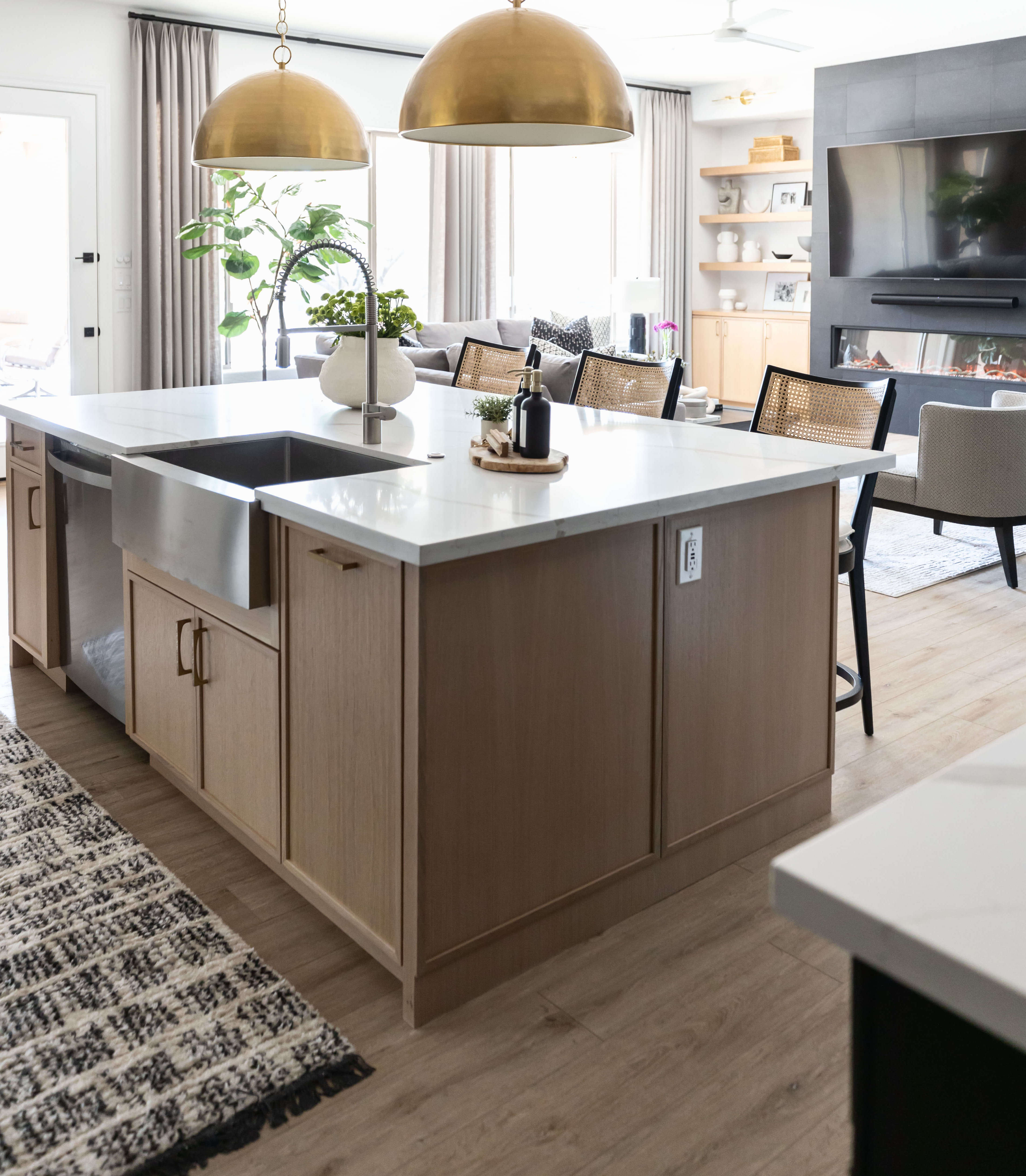
As you map out your modern kitchen layout, consider exactly where power outlets will be most useful. Will you need them along the worktop for everyday appliances like a toaster or kettle? Should there be outlets on the island or nearby if that’s where most of your prep happens? Think through how and where you'll use high-demand appliances to ensure you have enough sockets in the right spots.
An easy way to integrate a socket is by placing it on the side of the island, out of the direct line of sight. “For those who do want sockets on display, we suggest positioning them on the end panels or sides of the island, where they can be discreetly concealed,” says Allison Lynch of Roundhouse. “It’s all about understanding how the island will be used and tailoring socket placement accordingly.”
When selecting sockets, it's important to consider the types of plugs you'll be using. For instance, if you have appliances that require a three-pin plug, make sure your socket choice is compatible.
2. Or Below It

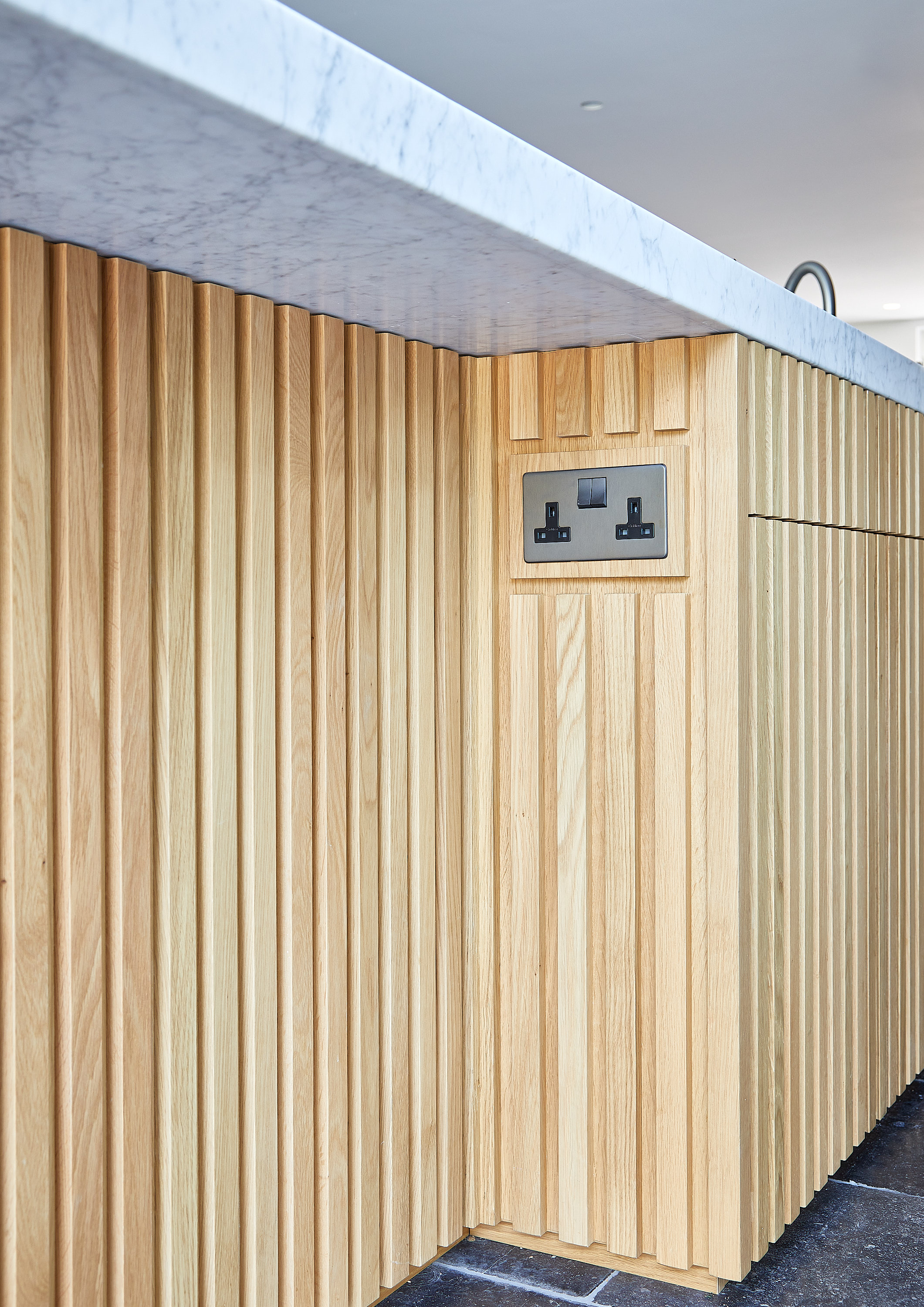
If you have a sleek, minimalist kitchen island design, exposed sockets can disrupt the clean aesthetic. A smart solution is to install them just below the kitchen countertop — keeping them within easy reach while out of sight.
“I’d say that generally people tend to prefer visible sockets to pop-up options, however, they tend to be hidden on the sides of cabinetry in a back panel or side panel, or underneath worktops, for example,” says Emily Pickett of Kitchens by Holloways. “This means they are easily accessible and practical.”
“When it comes to kitchen islands, integrated power solutions are essential, but they should never compromise the aesthetic,” says Allison. “We typically install sockets on the underside of the breakfast bar so devices like phones or laptops can charge discreetly while you're seated.”
Make sure the socket isn't too close to the kitchen island seating, though, lest it should interfere with the seated person. Also, it would be a good idea to have a socket cover for safety.
The EVOline Backflip is a sleek worktop socket with dual UK outlets and a USB-C charger. Compact and stylish, it’s ideal for kitchens or desks. A simple tap flips it open, revealing sockets safely raised to guard against spills and splashes.
This antique brass 2-gang socket features a warm, aged finish and black insert, ideal for period-style homes. Its screwless design hides fingerprints and blemishes, making it perfect for busy spaces. Matches well with Hamilton Hartland CFX Antique Brass finishes.
3. Go for Pop-Up Sockets
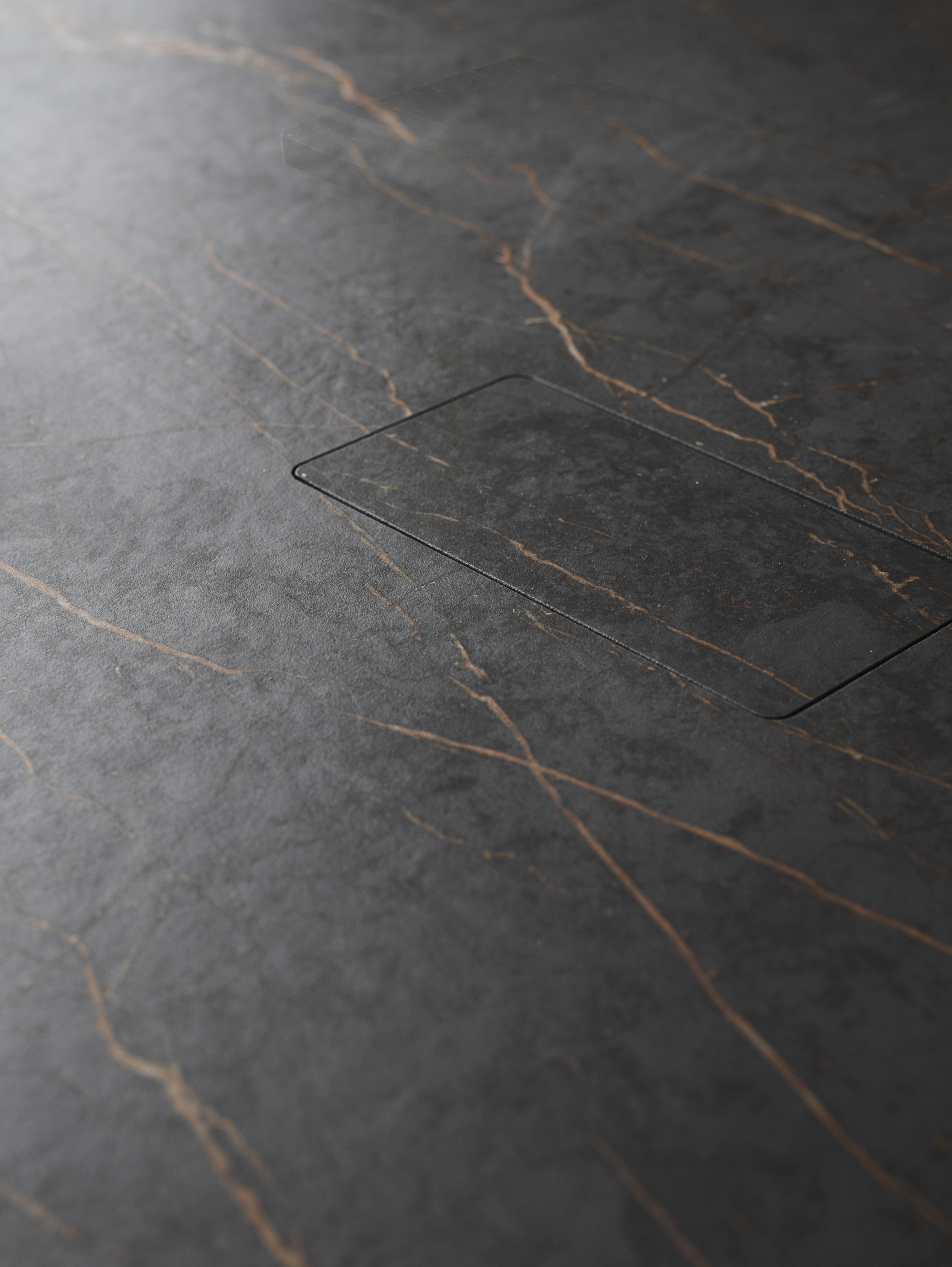
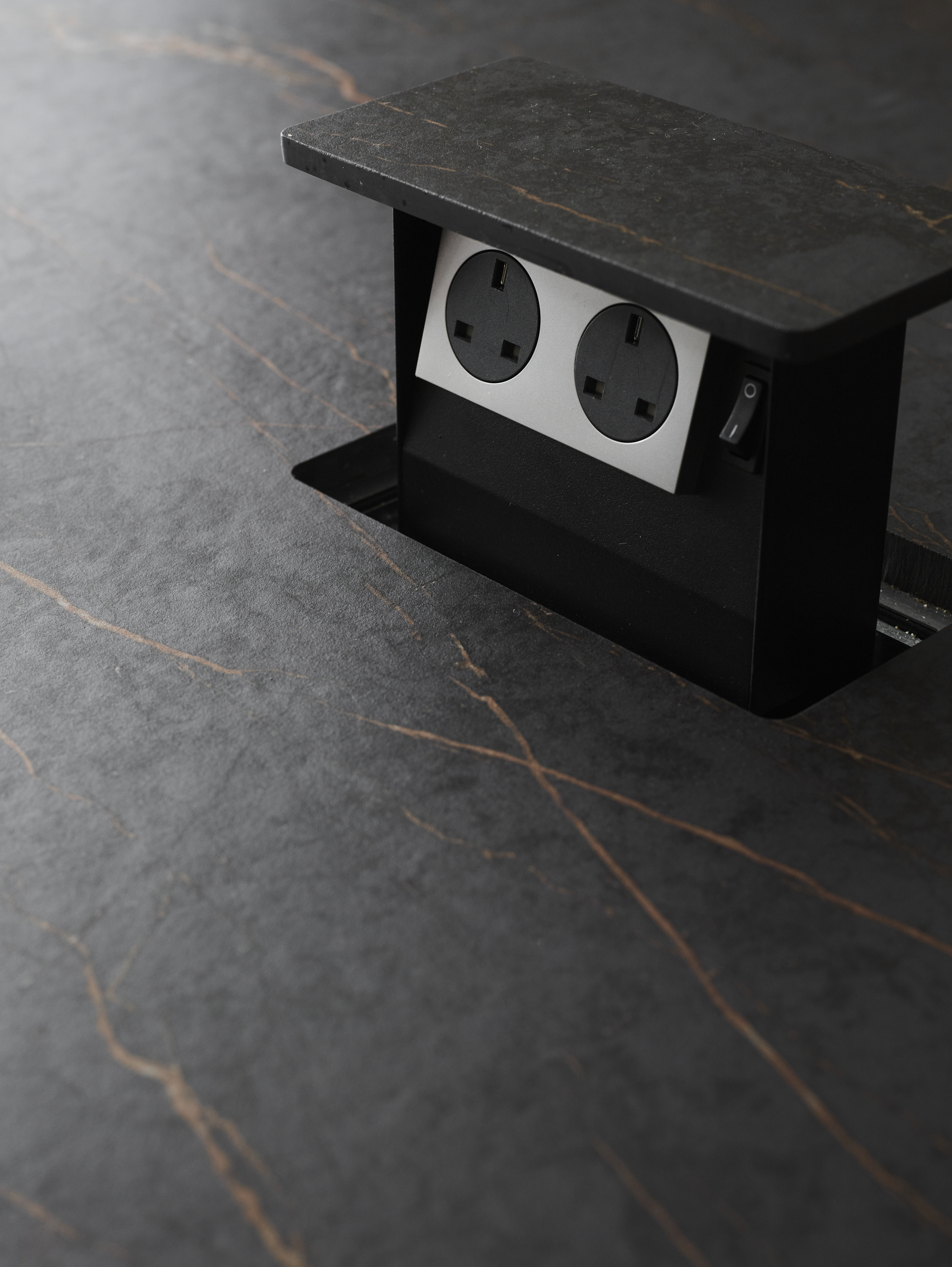
For small kitchen islands where space is limited, a pop-up socket is often the best choice, which sits flush with your countertop. It stays hidden when not in use and can be easily pulled out when needed, keeping the overall look of the kitchen clean and uncluttered.
“And if a pop-up is non-negotiable, we’d always recommend a solution like S-Box, which allows the socket to be integrated seamlessly into the worktop for a more refined finish,” advises Allison.
However, Emily offers a word of caution when embracing this hidden socket idea: “The main consideration with a pop-up socket is whether it might compromise the look of your island. If you’ve chosen a beautiful stone countertop, you may not want to interrupt its surface with a pop-up fixture.”
4. Consider Placing the Socket on the Island Extension

Aesthetics aside, it’s important to consider functionality when deciding where to place a socket on your kitchen island. While many choose to install one near the sink, it may be more practical to position it near an island extension — especially if it includes banquette seating.
Having an outlet close to the seating area is ideal for charging laptops or phones while enjoying a coffee or a quick breakfast. It also keeps electricals away from the wet zone, making it a safer overall choice.
5. Blend the Socket With the Island
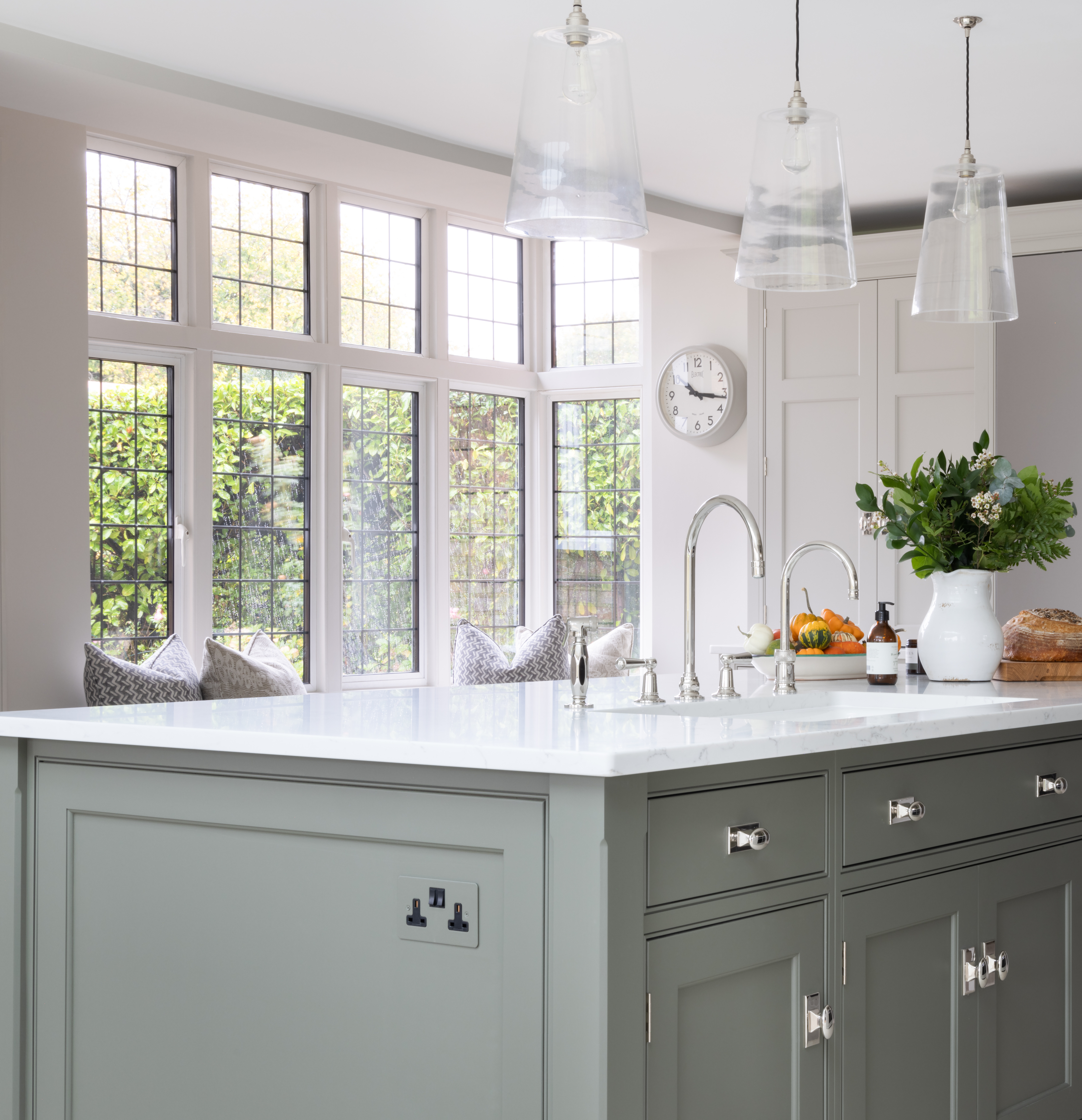
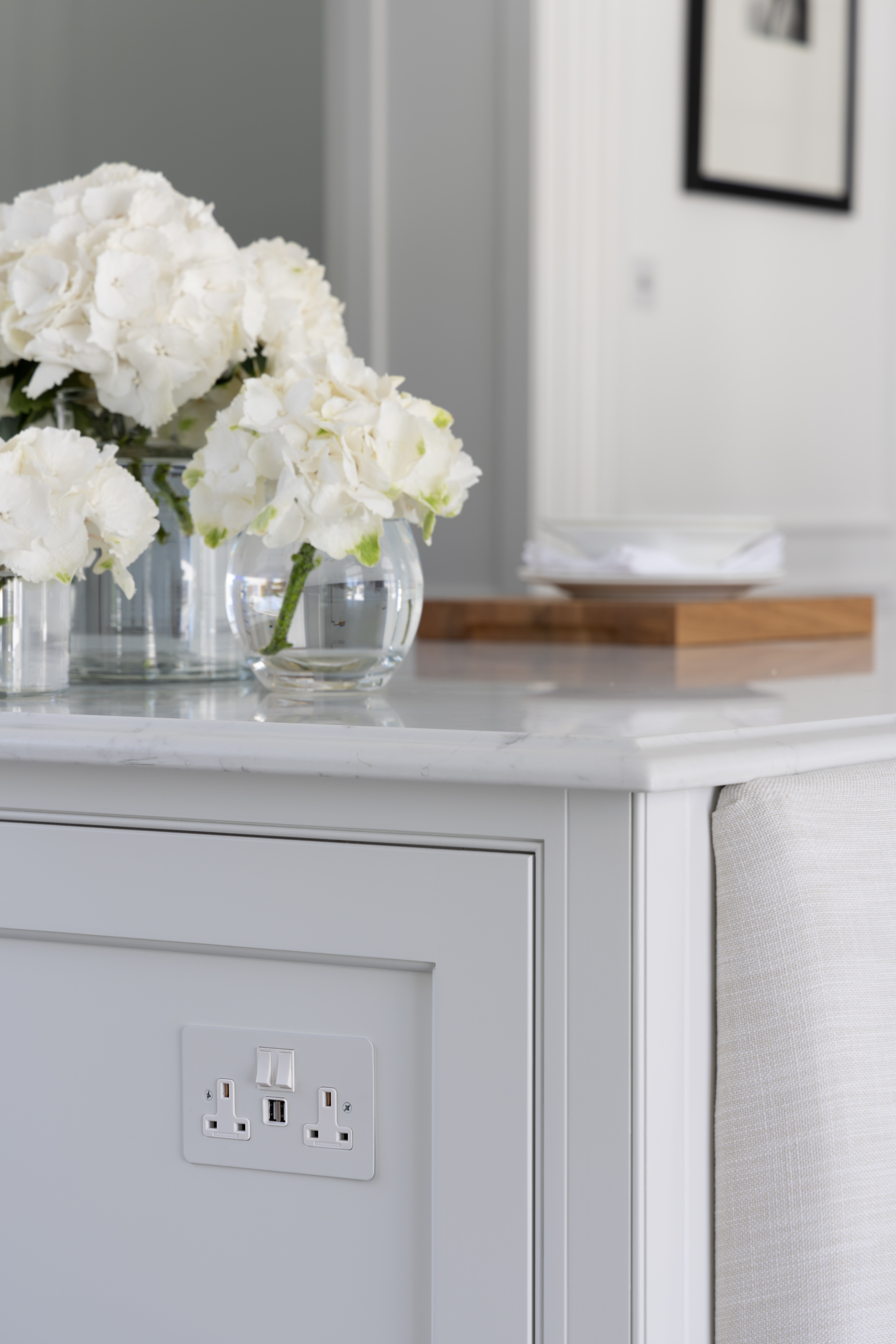
Planning a kitchen with a clean, sleek, and unified design means considering every detail, even the kitchen island socket. Designers advise that if your socket is visible, it should complement your kitchen's overall style.
“Painted plug sockets are a really clever way to keep the practicality without compromising the design integrity of a space, especially on an island where ideally you don’t want a socket to jump out at you,” says Louisa Eggleston, creative director at Humphrey Munson. “For darker colors, choose a black insert, and for lighter tones, opt for white.”
Pooky is just one of a handful of retailers who offer paintable sockets, making blending yours into your island so much easier.
6. Place the Socket Above the Island Drawer

One way to keep sockets accessible while maintaining a streamlined look is by placing them just above the kitchen storage, such as above a drawer. If the sockets still feel too visible, consider covering them with a decorative plate that blends in with your kitchen’s design.
When installing sockets above drawers or near the hob, be mindful of spacing. A minimum distance of 300mm is recommended, but it’s always safer to position them as far away as possible. You could also install a secondary socket panel on the main kitchen countertop to handle heavier appliances, keeping the island clutter-free and safer to use.
7. Choose Metal Finishes to Match Your Kitchen Design
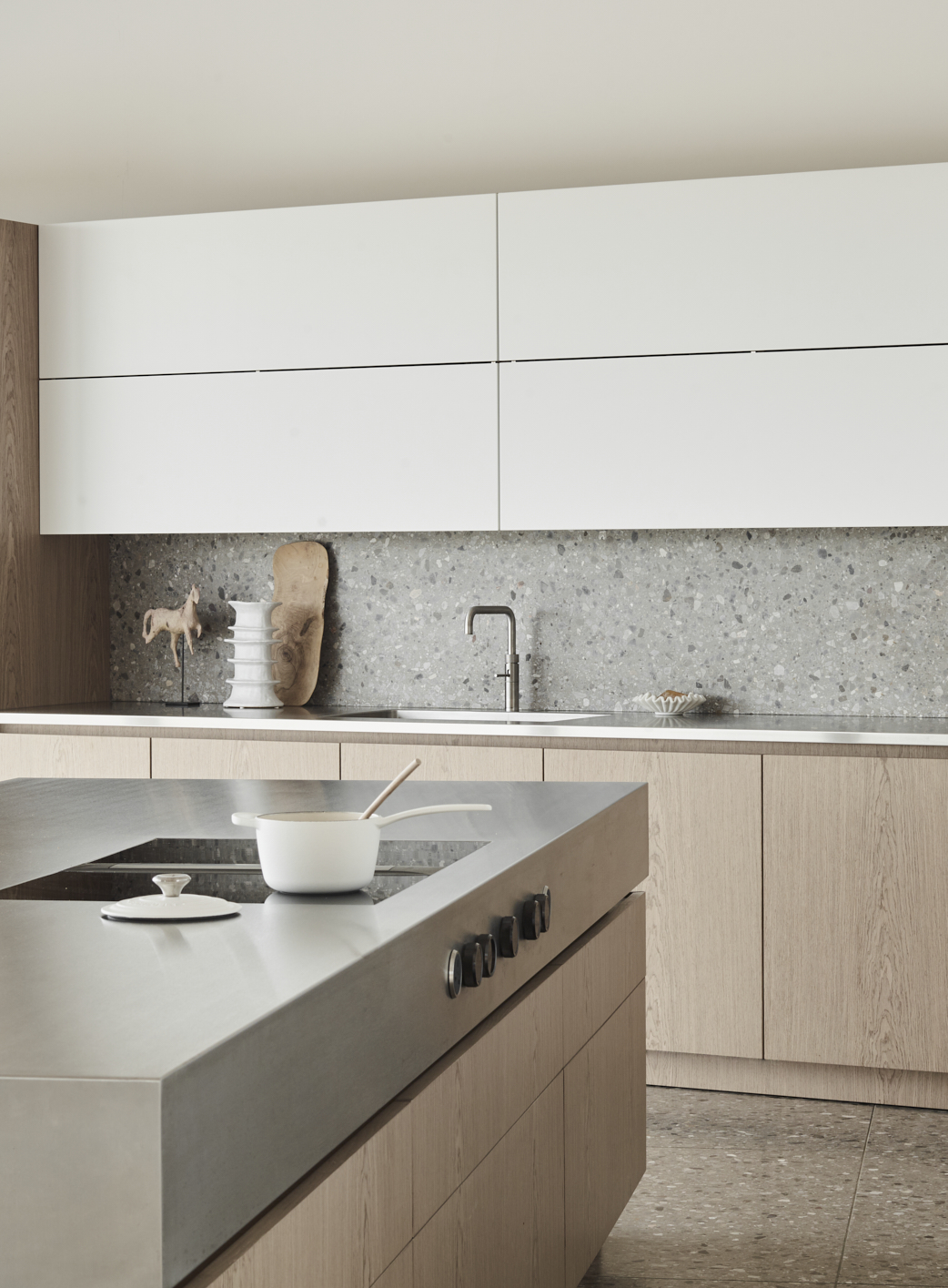
If you're drawn to a more industrial kitchen style and appreciate the look of exposed ducts, raw materials, and utilitarian details, oversized sockets can make a striking addition.
Opt for designs with robust metal finishes. “With so many possibilities available, when plug sockets are visible we are able to match them in beautiful finishes such as antique brass, satin or nickel, as opposed to plastic ones, ensuring they match the overall aesthetic of the scheme,” says Emily.
These sockets not only handle multiple kitchen appliances with ease but also serve as bold design features. Installed on a concrete or stainless steel island, they reinforce the industrial aesthetic while offering both durability and everyday functionality.
8. Design a Separate Panel for Sockets
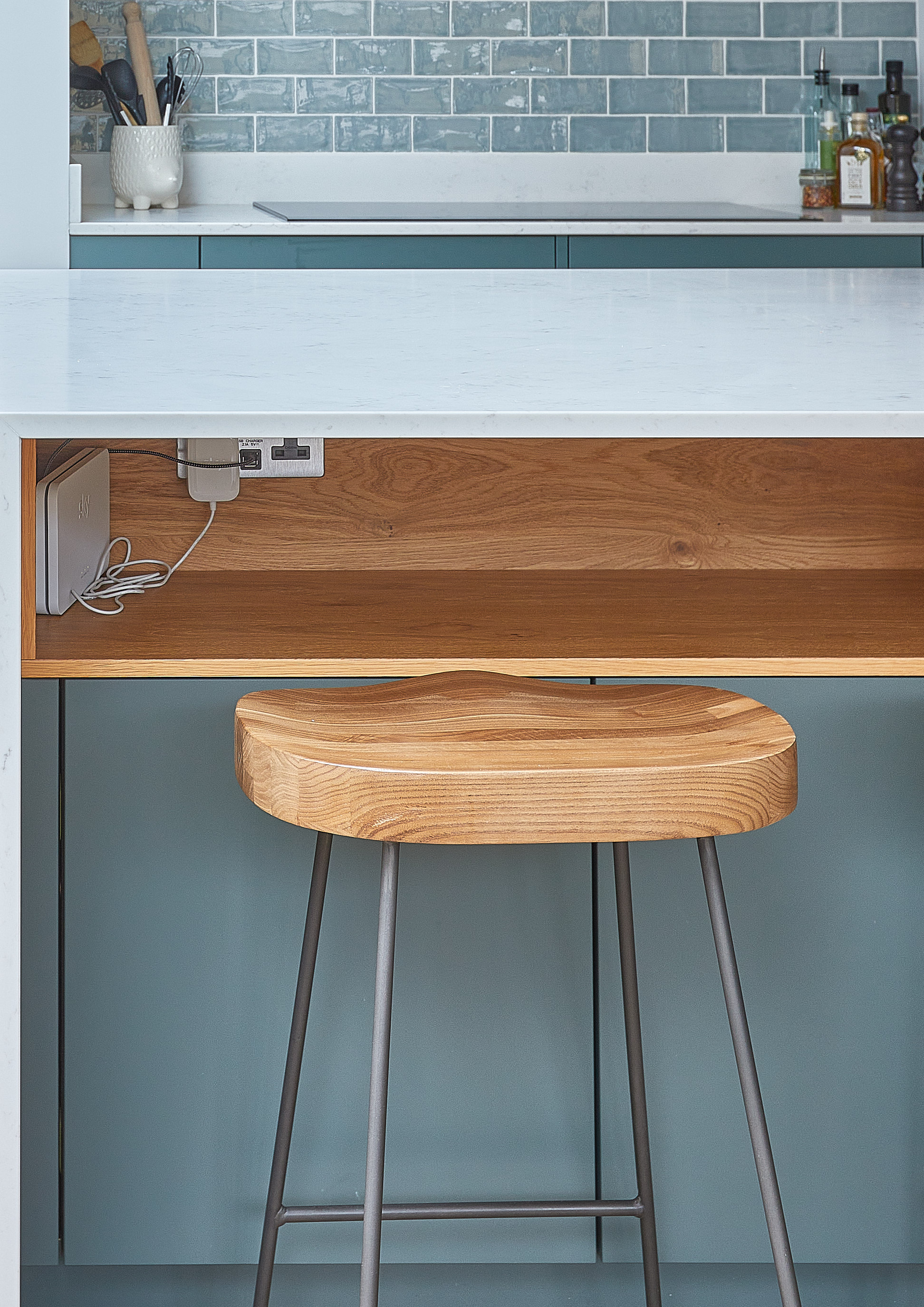
Does your kitchen island double as a breakfast bar? Is it where you and your children gather to chat, eat, or even get some work done? Consider turning it into a mini workstation by opting for a sleek countertop that cleverly conceals a panel for sockets and storage.
“If clients want to use handheld blenders or mixers at the island, we often recommend integrating BORA sockets into the front fascia of a built-up worktop or into a false section beneath,” says Allison. “They’re far more elegant than pop-up sockets, which require internal space to retract.”
9. Hide the Sockets Under a Sliding Panel
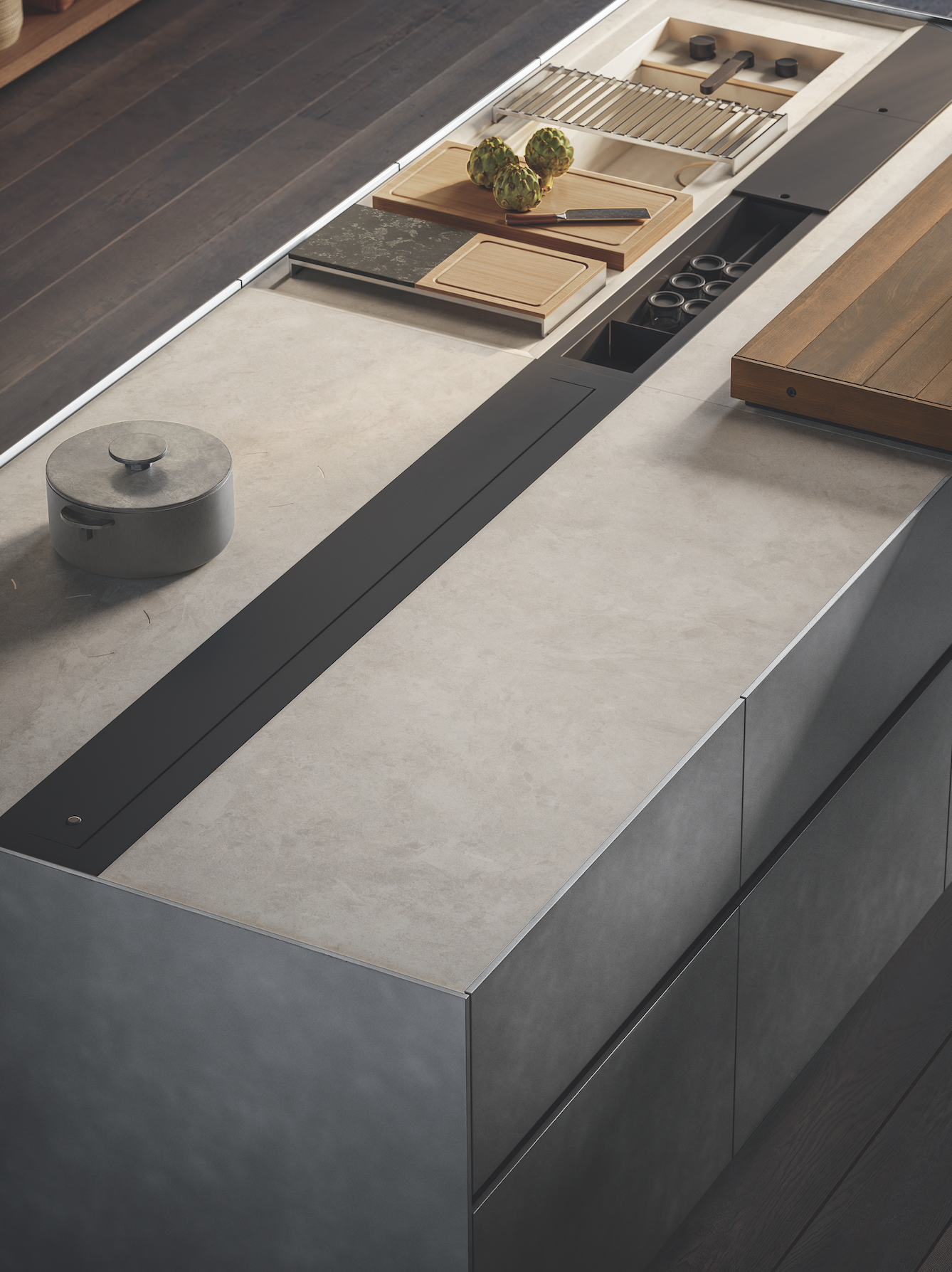
In the most minimalist kitchens, even the smallest elements are concealed to maintain a clean, streamlined look. A perfect example is Combine Evolution, a kitchen designed by Italian architect Piero Lissoni for Boffi. The concept merges two islands and a dining table into one seamless unit. One island houses the washing and cooking functions, while the other is dedicated to food prep—both connected by a striking snack table crafted from solid wood staves.
“In the Evolution version, we integrated an equipped track for countertops, called the Inside System,” explains Lissoni. “It sits behind the cooking and washing zones and features sliding lids that conceal storage compartments fitted with Inside Series accessories—cutlery trays, knife holders, spice and oil containers, and electric outlets with hidden sockets.”
10. Place It Inside a Drawer

And finally, a smart and practical way to integrate a socket in the kitchen island layout is by installing it inside a drawer. By drilling a hole for the outlet and fitting a socket within the drawer, you can keep it completely hidden while still ensuring easy access.
“Charging drawers are becoming increasingly popular and are perfect for stowing away everything from phones and smartwatches to Nintendo consoles and laptops while they power up,” says Allison.
It’s a discreet solution that keeps worktops clutter-free while supporting the tech needs of a busy household.
FAQs
Where Should You Not Place Sockets on a Kitchen Island?
When planning socket placement on a kitchen island, avoid installing them on the front-facing side, particularly if the island includes seating, as they can interrupt the visual harmony and limit legroom. Sockets should also be kept well away from sinks and hobs to reduce the risk of water splashes or heat damage, and to comply with safety guidelines.
Additionally, avoid mounting outlets directly onto decorative panels or feature materials, as this can detract from the overall aesthetic and undermine the island’s clean, cohesive look.
Well-planned socket placement on your kitchen island can enhance both practicality and aesthetics. Whether concealed in drawers or built into sleek pop-up panels, smart solutions keep your counters clutter-free, your gadgets charged, and your kitchen effortlessly stylish and efficient.

